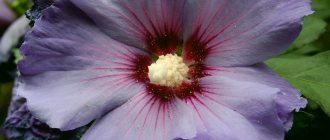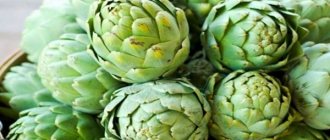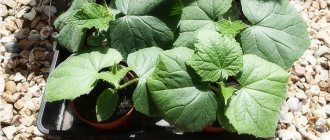What is garden chrysanthemum
Chrysanthemum is a herbaceous plant from the Asteraceae family (another name is Asteraceae). In Latin it is called Chrysanthemum. People sometimes call it the golden, or sunny, flower. This is because most species (of which there are 29 in total) have yellow or orange inflorescences.
For plants such as chrysanthemums, perennial planting and care in open ground do not require any special approach. This flora is quite unpretentious, yet beautiful. Subshrubs are able to survive in the Russian winter; they also bloom late and for a long time.
Interesting. With proper care after cutting, these flowers can last in a bouquet for up to 30 days.
Garden chrysanthemum is divided into varieties depending on the shape of the flowers:
- Single or double row. They have one or two rows of petals, respectively. For example, like the Tricolor variety.
- Semi-double. There are only three petal layers here.
- Terry. There are many petals, they all vary in shape, forming a lush inflorescence.
- Anemoids. The flowers of this chrysanthemum resemble anemones.
- Pompons. Numerous small petals form a pompom. They are often called spherical.
Chrysanthemums in the garden bloom late - in August, flowering continues in the fall. This flora can withstand frosts down to -10 degrees Celsius.
Varieties and varieties of chrysanthemums
Conventionally, all chrysanthemums can be divided into 2 types:
- Large-flowered (Indian) - depending on the variety, the diameter of the inflorescences can be about 10-25 centimeters;
- Small-flowered (Korean) - the diameter of the inflorescences is from 2 to 9 centimeters.
As a rule, perennial Korean varieties are planted and grown in our gardens, which winter well (but better with additional shelter). And the most popular are spherical garden chrysanthemums (multiflora).
Large-flowered varieties are most often used for commercial purposes, that is, for cutting and making bouquets , because they need warmer conditions, obviously not in the middle zone or the Urals and Siberia, where they simply freeze out.
Video: types and varieties of chrysanthemums
Planting chrysanthemums in spring
Perennial phloxes: planting and care in open ground
Not everyone knows how to plant chrysanthemums. There is nothing complicated in the procedure:
- Choose a suitable day or time. There should be no active sun.
- Make a hole about 40 cm deep in a suitable place.
- The bottom of the hole is watered, then drainage is poured there, soil mixed with fertilizer is added (in a ratio of 1 to 20).
- A chrysanthemum is placed in the hole and its roots are dug in. The flower should not be deeply buried.
Planting chrysanthemums in open ground
The most difficult thing in planting this flora is to comply with all its maintenance requirements.
When planting chrysanthemums in open ground and subsequently caring for them, you need to consider the following:
- They love the sun. They won't like even the slightest shading.
- Moisture balance is required. These flowers do not like it when the water stagnates (so they are planted on a small hill). But overdrying the soil will kill the flora.
- Be sure to choose the right land. It should be loose, moisture-permeable, fertilized.
Important! If the soil is not fertile, you can use manure, peat or compost as a top dressing when planting. It's important not to overdo it.
- Chrysanthemums need drainage. Sand is best suited for it.
Where to plant chrysanthemums
Almost all flower growers know how to grow chrysanthemums and how to plant them in the garden. However, few people think about planting rules. The main thing is to provide the plant with at least three hours of sunlight daily, so a shaded area is not the best option for planting. The place should be open on all sides.
You should not choose for planting areas with dry peaty or sandy soil, poor in minerals. Another requirement for soil is a good ability to retain moisture. At the same time, the water should not stagnate.
The plant will develop best if placed on light sandy loam soils. If the soil is rich in organic matter and humus, the chrysanthemum will take root well and will delight you with its lush blooms for a long time. Also, the soil must drain well.
This flower does not like sudden temperature changes, wind and lack of sun.
Experts do not recommend planting these flowers for more than two or three years in a row in the same area - this can cause problems such as degeneration of the variety, damage by viral and fungal infections, and invasion of parasites.
If chrysanthemums are planted in soil poor in nutrients, the situation can be saved by regular fertilizing. It is much more difficult to solve the problem of wintering (most varieties do not tolerate even the slightest frost). In case of high soil moisture, watering must be reduced, this will prevent rotting of the roots.
Spring care rules
After chrysanthemums have been planted in the spring, they only require special attention for the first couple of weeks. In the future, less effort will have to be made to grow them.
Chrysanthemum Bacardi - planting and care in open ground
What to do:
- At first (from two to five days after manipulation), the seedling should be artificially darkened. The flower loves the sun, but it needs time to adapt to a new place.
- A tall variety should definitely be provided with support during adaptation.
- Immediately after planting, the first pinching is carried out - removing the upper growth nodule on the plant. 3-5 days after this, a second pinching is carried out. This time the upper part of the stem with 2-3 nodes is removed.
Note! The spherical chrysanthemum (Multiflora) does not need pinching.
Globular chrysanthemum Multiflora
Secrets of care during the season
Even beginners can care for a garden chrysanthemum - with proper planting and a well-chosen place, it grows “by itself.” However, if you want to get the most out of your bush, you need to know a few rules and secrets of care.
Rules for watering and fertilizing
Chrysanthemum does not tolerate excess moisture and waterlogging of the soil. But it is also impossible to leave it throughout the entire season without watering - in this case, the stems quickly become woody, the bush loses its attractiveness, and the number of flowers decreases.
Water chrysanthemums moderately, avoiding complete drying out and cracking of the soil. After watering, the soil is loosened to prevent the formation of a “crust”. You can reduce the frequency of watering and protect the roots from the heat by mulching.
Several times a season the bushes are fed with mineral fertilizers, which increases the quality and duration of flowering. In the spring, 2-3 weeks after planting, nitrogen fertilizers, for example, saltpeter or urea, are applied at the rate of 30 g per m2. In July and August, the bushes are fed with a mixture of phosphorus (20 g) and potassium fertilizers (15 g).
How to form a bush correctly
Proper formation of the bush is an important stage in growing chrysanthemums. Seedlings are pinched immediately after rooting, usually above 8-10 leaves, after which side shoots begin to actively develop. In large-headed chrysanthemums, they are removed, leaving only a few of the strongest ones, which, in turn, are also pinched. In small-flowered, low-growing varieties, the first “wave” of stepsons is left to form a more lush bush.
An adult chrysanthemum constantly produces shoots-stepchildren from the axils of the leaves. Starting from mid-June, they are removed weekly - otherwise she will “waste” all resources on their development to the detriment of flowering. Even properly formed tall varieties will need supports - take care to install them in advance so as not to break already overgrown bushes.
The formation of chrysanthemum continues during the flowering period. After the first crown buds have faded, they are removed to stimulate the development of second-order ovaries. Usually it is from them that the most beautiful inflorescences are formed. Ovaries of the third order often do not have time to ripen, so they are partially removed.
Autumn work in the flower garden
Preparation for winter begins in September - to increase the frost resistance of the bushes, they are fed with phosphorus-potassium fertilizers. Chrysanthemum bushes often bloom in autumn until frost. After the first frost, the above-ground part of chrysanthemums is cut off, even if there are still buds on the stems, leaving 10-15 cm.
To help chrysanthemums survive the winter, they are hilled up, covered with a layer of leaves or straw, and covered with branches on top. Large-flowered plants are especially carefully mulched; they are more thermophilic. Some varieties have to be dug up for the winter and transferred to cellars or other rooms where the temperature will not drop below 0.
Transplanting chrysanthemums
Garden hydrangea - planting and care in open ground
From time to time it is recommended to replant the garden perennial chrysanthemum. The thing is that even the most fertilized soil is depleted over time. The optimal balance of minerals and organic substances in the soil is very important for this flora. Experienced gardeners carry out this manipulation annually in May - there are no longer night frosts, but it is not yet time for active summer sun. Transplantation is carried out as follows:
- A new location is being selected.
- A flower in an old flower bed is well watered - this way there is less chance of damaging the roots.
- After extraction, the uterine bushes should be divided so that each separated part has its own root.
- The separated shoots are planted each in their own hole and watered well. The distance between seedlings should be at least half a meter.
- After five days, it is recommended to fertilize the transplanted flowers with suitable products.
Important! Only golden flowers that have overwintered in the open ground can be replanted.
How to preserve chrysanthemums in winter
Heat-loving large-flowered varieties are afraid of frost and do not disappear in winter. Such varieties are usually dug out of the ground before frost (by selecting the mother bushes), placed in wooden boxes and stored in a cool room with a temperature of 2-6 degrees until spring.
Chrysanthemums are watered occasionally to keep the lump of earth moist.
Are chrysanthemums dug up for the winter?
Beginner gardeners sometimes wonder whether it is necessary to dig up chrysanthemums for the winter. There is no definite answer here, since each variety has its own requirements. Some of them can easily winter outside, others need to be transplanted into a pot and taken indoors for the winter. In any case, the chrysanthemum needs some care items, regardless of where it will spend the winter:
- Trimming. You need to let it bloom and trim the stems, leaving only 10 cm.
Chrysanthemum pruning
- Feeding. At the beginning of autumn, it is recommended to begin preparations and switch to phosphorus-potassium fertilizers. They are the ones who will help the flower survive the cold.
As a rule, Korean (or Chinese) hybrid street chrysanthemum is the species that is most often found in Russia; it is winter-hardy. This means there is no need to replant it. Other species (for example, Chrysanthemum Mix - an indoor autumn perennial) may need this.
Landing rules
The popularity of the culture is evidenced by the variety of shapes and colors. Breeders annually develop new forms: from compact potted varieties to tall cutting varieties. The flower can resemble a familiar daisy or a tight pom-pom made of many elegantly twisted petals. Early varieties of chrysanthemums bloom at the end of summer.
It is preferable to plant young plants with the arrival of stable positive temperatures. In the middle zone this is the period from the first half of May to June. You can plant a flower at the end of August - the first half of September, then the seedlings will have time to take root before the onset of frost.
The color of chrysanthemum petals can be one-color or two-color
Selecting a location
Chrysanthemum needs maximum lighting, since planting in a dimly lit place is fraught with elongation of shoots and poor flowering. The root system of the plant is extremely sensitive to both lack of moisture and waterlogging.
Since the roots of the flower are superficial, it is recommended to place chrysanthemums in elevated areas. This way you can avoid stagnation of moisture during heavy rainfall or excessive watering.
To grow chrysanthemums, choose the sunniest place on your site.
Soil preparation
Growing chrysanthemums requires certain skills. First you need to find out what microclimate this flower likes. Chrysanthemum grows well in slightly acidic or neutral soils. Light, air- and water-permeable soils are an ideal environment for the development of the plant’s root system. Heavy loam or poor sandy soil must be prepared before planting.
To improve aeration, add the following to clay soil:
- sand;
- bark;
- wood sawdust.
Soil aeration material
Sandy soil, “cold and hungry,” is also unsuitable for growing flowers, since it quickly warms up and freezes, and is unable to retain moisture and nutrients.
Such soil is improved by adding:
- clay;
- vegetable compost;
- leaf litter;
- ash;
- humus.
It is advisable to prepare the area intended for growing chrysanthemums in the fall. The flowerbed is dug up to a bayonet depth, lightly breaking up the clods with a rake. Having frozen over the winter, the earth will become fluffy, most insect pests and pathogenic spores will be destroyed.
Preparing the land for planting chrysanthemums
Planting pit
Depending on the characteristics, varietal chrysanthemums are distributed in a flowerbed or in a border. For large bushes, the planting scheme is 50 x 50; it is recommended to plant low-growing bushes according to the scheme 30 x 30. It is necessary to maintain a distance between plants, since the surface root system grows mainly to the sides.
To develop the root system of the flower, the planting pit is filled with:
- complex mineral fertilizers;
- peat;
- ash;
- top fertile layer of soil (turf).
Important! In the first days after transplantation, it is necessary to carefully monitor the soil moisture; frequent, but not excessive watering is recommended.
Chrysanthemums are planted in the ground to a depth of 25-30 cm
Covering chrysanthemums
Those types of sunny flowers that remain outside for the winter need not only to be trimmed, but also covered. This should also be done correctly:
- The formation of holes in the bush should not be allowed. Otherwise, water will stagnate there.
- If the winters are not very cold, then there is no need for serious shelter. It is enough to simply cover the pruned bush with peat and dry leaves. When the first snow appears, throw it on top.
- If the winter is severe, then you should take care of creating a more serious shelter.
You should not wrap up the pruned bush from the first cold snap. Light frosts will only benefit him by hardening him. It is recommended to cover the plant with special materials: lutrasil or spandbond. If there are none, then a regular thick polyethylene film will do. Be sure to clamp it around the edges with stones to prevent the possibility of being blown away by the wind.
Sheltering chrysanthemums for the winter
Never use shavings or peat under cover - this way they will get wet and retain moisture. Stagnation of liquid will provoke the death of the flora.
From the pot to the street
So, the chrysanthemum was transplanted into a pot and safely overwintered at home. Now it’s time to move it to open ground. You need to know how to properly plant a chrysanthemum in the garden that has survived the winter in the house:
- Before replanting, be sure to set the flowers still in pots outside for an average of one and a half weeks. This way they will be hardened and will endure all manipulations more calmly.
- You can also replant it in the old place, having previously fertilized the soil there with ash. During the winter the soil has already had time to rest.
- Two weeks after transplantation, the bushes can be fertilized.
Transplanting chrysanthemums from a pot
How and when to pick chrysanthemum seedlings
Chrysanthemum seedlings should be planted when the seedlings have 2-4 true leaves . It is necessary to carry out the procedure on time, in the optimal time frame, so do not delay the event.
The soil for picking can be used the same as for sowing seeds for seedlings. As for the container, now it is necessary to use individual and large cups , for example, plastic or peat.
Correct picking is done according to this scheme:
- Water the plants 2 hours before the procedure with settled water at room temperature.
- Be sure to place a drainage layer at the bottom of the cup, for example, sand, fine expanded clay or something else. Layer thickness - 1 centimeter.
- Separate the plants using a plastic spoon, do this as carefully as possible, try not to damage the delicate roots.
- Weak, elongated, frail seedlings should be discarded.
- One seedling is placed in one cup. There is no need to shake off the soil on the roots.
- After replanting, add soil up to the cotyledon leaves.
- Gently compact the soil in the cup and water.
Video: how to pick chrysanthemum seedlings.
Rules and features of care after picking:
- Immediately after the procedure, it is recommended to spray the plants with a solution of a growth stimulator , for example, Zircon or Epin Extra. Prepare the solution according to the instructions. Such watering will help the plants take root and adapt faster.
- After picking, watering should be done as soon as the soil surface dries slightly.
- It is also recommended to continue additional lighting.
- A week after picking, it is recommended to fertilize the seedlings. For example, you can use the preparations “Veriohumus for seedlings”, “Uniflor Flower”, “Fertika Lux”, “Potassium humate”. Then you can feed once every 10-14 days.
Chrysanthemum propagation
You can buy a ready-made, grown shrub. But self-grown flowers are especially appreciated. You can breed them in one of several ways.
Cuttings
Cuttings of chrysanthemums is one of the most popular methods of growing them, because it is suitable for propagating flowers even from a bouquet.
A small cutting is placed in water. It will grow thin roots. When they appear, you need to transplant the sprout into the substrate. It should contain peat and sand in equal proportions. The box with the substrate should be covered with glass or polyethylene, creating a greenhouse.
Unlike other plants, chrysanthemum does not need heat. It can be cut at a temperature not exceeding 15 degrees Celsius. When the plant gets stronger, it can be transplanted into a separate pot, then into open ground.
Note! After cuttings, young flora can only be replanted in the spring, when frosts have passed. If the sprout is received in the fall, it is better to let it overwinter in the apartment for the first time.
Growing from seeds
Another frequently asked question is how to grow chrysanthemums from seeds. Again, there is nothing complicated - they are sown directly in open ground in May. When the sprouts reach 10 centimeters in height, they are pinched for the first time. If this procedure is not carried out, you can forget about the beautiful shape of the bush. Having stopped pushing out tall stems, the chrysanthemum will bloom for the first time in the fall.
You can buy golden flower seeds in the store. You can assemble it yourself, observing the following conditions:
Chrysanthemum seeds
- Protect the inflorescences from getting wet.
- If the plant is taken indoors for the winter, then before collecting the seeds it should be kept on a windowsill where there is plenty of sun.
- The seed is ready for collection as soon as the inflorescences begin to darken. If the moment is missed, they will begin to crumble.
You can’t plant fresh seeds right away, otherwise only 10% will begin to sprout. After ripening for a couple of months, this percentage increases.
Chrysanthemum seedlings
Reproduction of this flora is also possible using seedlings. It is either grown from seeds at home or purchased in a specialized store. This method is only suitable for spring planting.
Planting a bush
This method is recommended to be used on average once every two years. Not only to propagate the flower, but also to rejuvenate the bush. It consists of the following: the plant is dug up, several shoots with roots are separated from the mother bush using pruners. All separated parts are seated separately.
This is the only recommended method for planting new chrysanthemums in the fall.
Caring for chrysanthemums
Caring for chrysanthemums involves regular watering, fertilizing, removing faded inflorescences, trimming excess branches and plucking out buds. It is necessary to rejuvenate old bushes in a timely manner - once every three years.
How to water chrysanthemums
At the beginning of the growing season, chrysanthemums are watered about once a week, generously wetting the top layers of soil. In summer, as the temperature rises, the frequency of watering increases, this can be once or twice a week, depending on the weather. By the time of flowering in September, watering is even more frequent - at least three times a week, but do not forget that frequent watering is permissible only on well-drained soil!
Feeding
Chrysanthemums require a rich set of nutrients, in addition to nitrogen, phosphorus, potassium, sulfur, calcium and magnesium are needed in significant quantities, and small amounts of iron and manganese are also needed, less significant, but it is desirable to be included in fertilizers for chrysanthemums: boron, copper and zinc.
Nitrogen is an element that promotes rapid leaf growth, but is most useful only at the beginning of the growing season, before the formation of inflorescences. Do not use nitrogen fertilizers later than June! If this element is added in excess, especially with a lack of light, the plant forms weak stems and a sluggish root system, and very easily becomes ill with powdery mildew and other diseases.
Phosphorus is vital for the health of chrysanthemums, especially for stimulating root growth and stem maturation; frost resistance of plants and general immunity depend on the sufficiency of phosphorus. If you apply phosphorus fertilizers, do not use double superphosphate, only regular one, it is more easily and evenly distributed in the soil, contains from 18% to 20% of available phosphoric acid.
Potassium promotes the formation of large inflorescences and dense woody stems. But if potassium is added in excess, for example, with ash, the foliage of chrysanthemums becomes very fragile, the stems are fibrous, do not hold moisture well and stand worse when cut.
It is best to feed chrysanthemums with a complete complex fertilizer, for example, with the NPK 5-10-10 formula, or even better with the NPK 5-10-5 formula:
- If chrysanthemums are planted this spring, two feedings per season are sufficient.
- If chrysanthemums were planted a year or two ago, feed them throughout the summer and once a month in the fall.
Since August only phosphorus fertilizer.
What does chrysanthemum suffer from?
Like all living things in this world, flowers can get sick. Chrysanthemum is no exception, despite the fact that it has a fairly strong immune system. Diseases that threaten this flora:
- Fungus. It appears from poor ventilation, stagnant water, high acidity of the soil and excess nitrogen in the fertilizer.
- Septoria. Chrysanthemum leaves become spotted and then dry out completely. The plant is treated as follows: damaged leaves are removed and the surviving ones are treated with a fungicide.
Septoria leaf blight of chrysanthemum
- Rust. With it, the leaves also deteriorate, only now they become whitish. May appear as orange powdery spots. Damaged greens should be removed, the plants should be thinned out, and moisture should be avoided on the leaves. Apply a fungicide if necessary.
Why doesn't it bloom
It is not only diseases or parasites that are to blame for the fact that chrysanthemum does not bloom. If for some reason there are still no flowers, the reason may be the following:
- Bad light;
- Lack or excess of fertilizer;
- No transfer;
- A period of rest that is not fully secured.
Chrysanthemum is popular everywhere: at dachas in the Moscow region, and in Siberia and the Urals. This flower is not capricious, but requires a certain amount of attention. With proper care, this flora will certainly delight its owners with stunningly beautiful blooms and will be strong and healthy.











